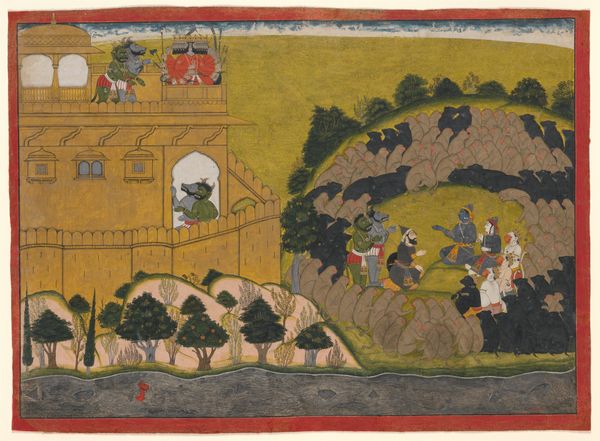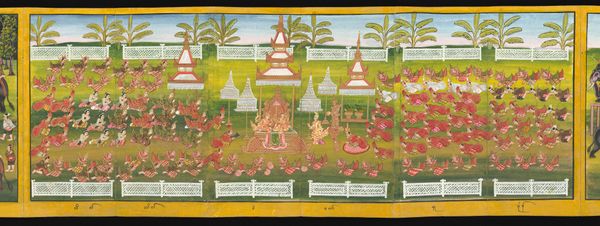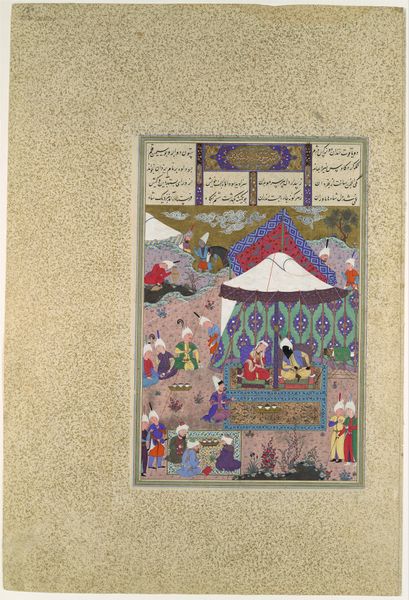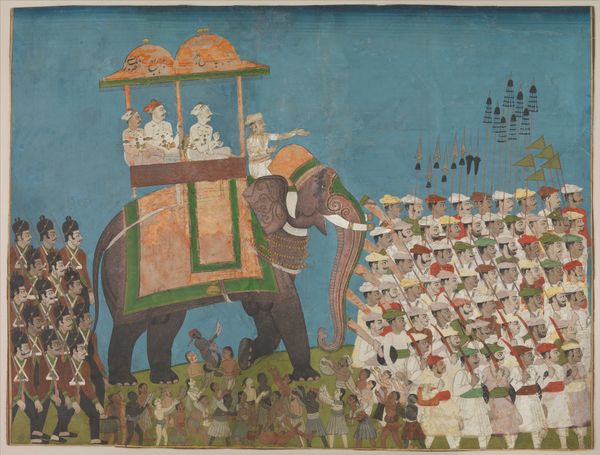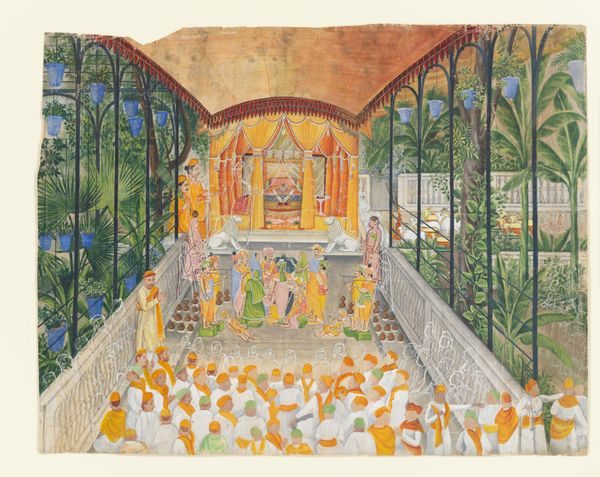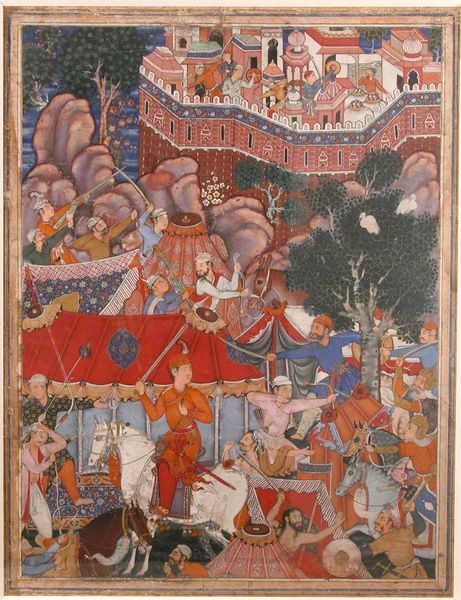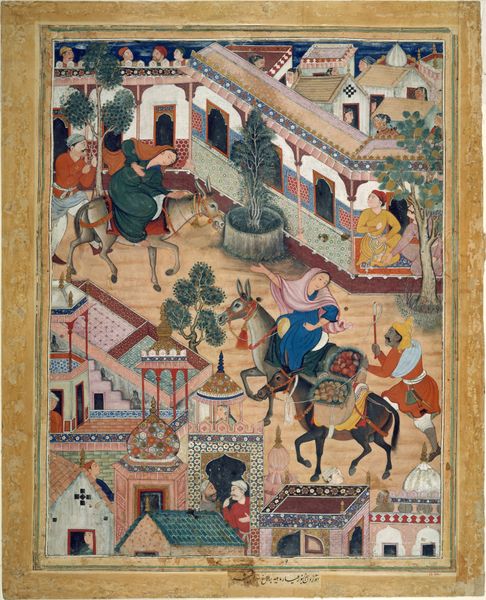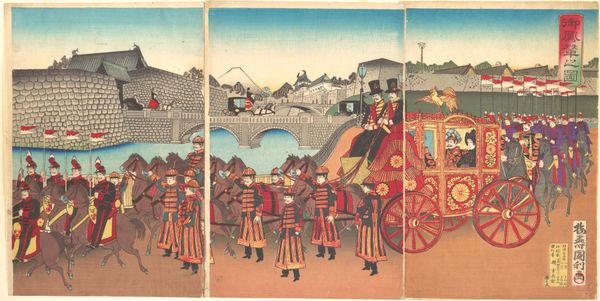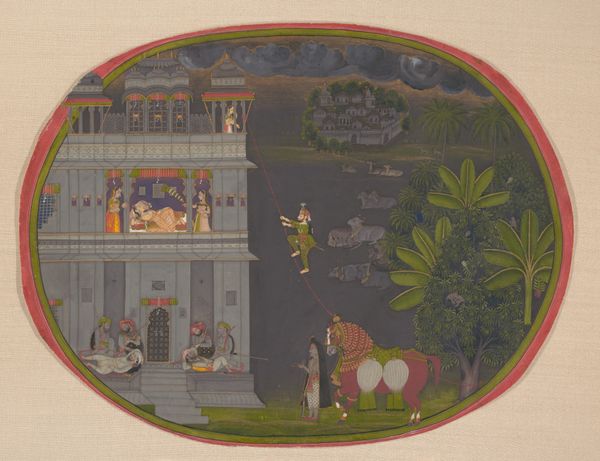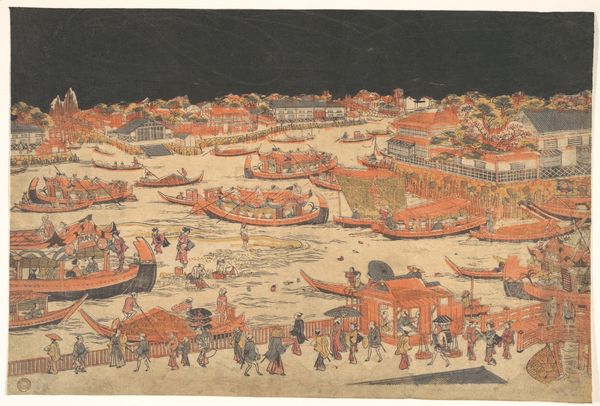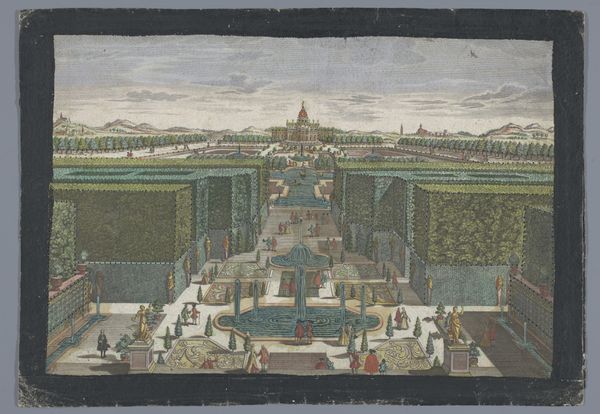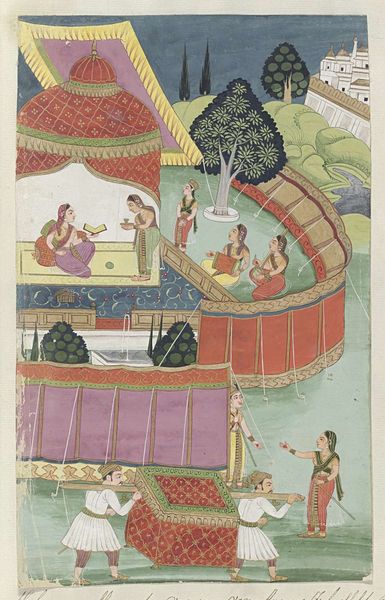
painting, watercolor
#
narrative-art
#
painting
#
asian-art
#
watercolor
#
geometric
#
miniature
#
watercolor
Dimensions: 12 3/4 x 19 1/4 in. (32.39 x 48.9 cm)
Copyright: Public Domain
Curator: Here we have "The Story of Pradyumna’s Birth," an Indian painting rendered around 1775. The artist is unfortunately unknown. Editor: It's quite charming! A delicate watercolor. I'm immediately struck by the precise, almost architectural rendering of the palace buildings, combined with a somewhat naive depiction of nature. There's a fascinating tension there. Curator: Indeed. The painting’s structure and style provide us with valuable information about 18th-century courtly artistic conventions, as well as the cultural and religious narratives circulated through the visual arts. Miniature paintings like this were frequently commissioned to promote social values. Editor: Focusing on those materials and production techniques, it’s interesting to think about how the artist achieved such detail with watercolor, probably using very fine brushes and layered washes to build up color and depth. We have to appreciate the artist's expertise in pigment creation. What raw materials were locally available or costly to import? What does it mean for the creation of this work? Curator: Good points! It reflects patronage networks, and that makes me consider who this was created for. The Pradyumna story, depicting the birth and divine power of a son of Krishna and Rukmini, served as a key Vaishnava religious subject during this time. It was an important topic within artistic patronage and workshop culture, which in turn raises many questions about social structures, hierarchical labor relations, and distribution networks in that era. Editor: And that layering informs our experience; the figures rendered inside those fortress-like architectural components are separated not only spatially, but in terms of the materiality used to bring the buildings to life. The color application and precision is stunning in contrast to the background foliage, almost as though the image’s makers wished to draw a sharp distinction between the divine narrative contained within and the outer world. Curator: Precisely! In terms of audience reception, what would viewers extract from seeing such grand architectural accomplishments next to depictions of royal, divine figures? Was there any expectation that these visuals would solidify any social expectations? It makes you question this miniature’s historical legacy and how the piece’s cultural significance could be reevaluated as history progresses. Editor: Considering those techniques of color and materiality opens pathways into broader narratives concerning patronage networks, access to materials, artistic exchange, and religious expression during the late 18th century. Curator: It is fascinating to see the many layers of history and story reflected in this piece.
Comments
minneapolisinstituteofart almost 2 years ago
⋮
Beginning in the mid-seventeenth century, the Nepalese royalty of the Kathmandu Valley became increasingly interested in Rajput paintings from India. Originally influenced by the Malwa and Kangra schools, Nepalese artists nevertheless developed an original spatial sense that utilized bird’s-eye views and multiple perspective. Set within a highly decorative landscape and elaborate palace, this scene is from the great Sanskrit chronicle of Vishnu, the Bhagavata Purana. It features the son of Krishna, Pradyumna, who was preordained to kill the demon king Sambara. Sambara threw the days-old infant into the sea, where he was swallowed by a fish that was soon caught and offered as a gift to the king. In the right side of the painting, the blue infant, having been discovered in the fish, is presented to Mayavati, goddess of love, in the kitchen of the palace where she worked. Mayavati secretly raised Pradyumna and eventually became consort to King Sambara. She is shown seated with him, holding court on the left side of the palace. Upon reaching manhood, Pradyumna slew the demon king, as he was born to do, and married Mayavati.
Join the conversation
Join millions of artists and users on Artera today and experience the ultimate creative platform.

